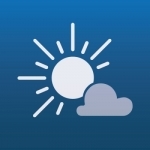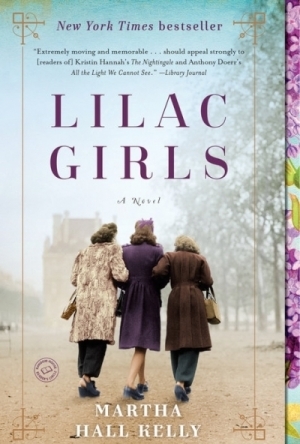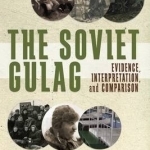
The Soviet Gulag: Evidence, Interpretation and Comparison
Book
Before the collapse of the Soviet Union and the subsequent archival revolution, Aleksandr...
Sexagon: Muslims, France, and the Sexualization of National Culture
Book
In contemporary France, particularly in the banlieues of Paris, the figure of the young, virile,...

Planes Live - Flight Tracker
Travel and Navigation
App
Planes Live Free is a simple yet powerful flight tracking tool that lets you watch the planes online...
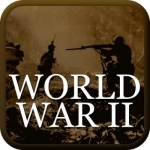
World War 2 History: WW2 Lite
Book and Reference
App
A very comprehensive App on World War II made specifically for the iPad. Brings World War 2 alive on...
The Chocolate Lady (94 KP) rated Lilac Girls in Books
Oct 5, 2020
In addition - and I hope this doesn't sound racist or snobbish - as a Jew, I have a hard time with Holocaust novels that seem to outwardly ignore how the Nazis treated the Jews, and only focuses on the other "undesirables." I realize that the Nazis didn't only kill Jews, but they were their primary target, and to avoid that altogether was disingenuous, to say the least. However, I was glad that this book didn't focus on any overtly Christian themes, even though I believe that there is a market for Holocaust stories within the Christian Fiction genre (see my review of the novel The Butterfly and the Violin by Kristy Cambron here http://drchazan.blogspot.com/2014/07/beauty-out-of-ugliness.html for more on my feelings about this).
Furthermore, the only Jewish reference I found in this novel was a passing reference to visiting the Ghetto and a remembrance of eating a Hanukkah delicacy. Unfortunately, the author didn't do her research properly, and the character said she remembered eating a type of doughnut that the Jewish bakers made for the holiday. Those doughnuts - known as "sufganiot" were never part of any Eastern European Hanukkah celebration at that time. In fact, sufganiot that are popular among Jews today, come from the Jews of North Africa and Arab countries. The word, sufganiot, comes from the Arabic and Hebrew words that mean sponge. While Jews in Poland did make something similar, their popularity as a particularly Hanukkah delicacy among Easter European Jews only coincided after Ashkenazi and Mizrahi Jews came together in Israel (i.e., post-1948). All of this is why I cannot give this book a rating of more than two and a half stars out of five, but I'm certain that it will find a much more sympathetic audience among non-Jewish readers.

Tides Planner
Navigation and Sports
App
Essential TIDES tool for sailors, divers, canoeists, fishermen, surfers, swimmers, photographers and...
Hazel (1853 KP) rated He Walks Among Us: Encounters with Christ in a Broken World in Books
Dec 17, 2018
Richard Stearns is the president of World Vision United States who, along with his wife Reneé, regularly visits the poorer countries of our world to see the ways the charity is helping to change people's lives. <i>He Walks Among Us</i> is a compilation of short thoughts and observations (two-to-three pages, including photographs) they have both had while conducting their work. As they alternate the writing, we are given opinions and experiences that we may be able to relate to our own. As Richard is the president of the organisation, he can give an insight into the way World Vision works, however, he can also express his opinions as a father, grandfather and believer in Christ. Reneé is also a World Vision worker, but due to her nature, gives a more maternal impression of the scenes she witnesses.
The individuals written about in this book come from all over the world. Most are located in Africa, but there are also similar stories in Asia, South and North America, and even Eastern Europe. The terrors these people have faced are shocking (AIDs, war, sexual abuse, natural disasters etc), but each family has been aided in some way by World Vision and their donors.
The purpose of <i>He Walks Among Us</i> is not to promote World Vision, but to encourage us to let God and Jesus into our lives. Richard and Reneé assume their readers are Christians, however, they realise that being a Christian does not equate to fully accepting God's plans. The victims of war, rape, and poverty mentioned have also been touched by Jesus. Many did not know him before World Vision came into their lives, but they have now been transformed through the power of his love - although their situation may not have significantly improved.
The actual stories used to illustrate the work of World Vision are only brief mentions, providing the bare bones of the situations. What Richard and Reneé have focused on is linking these lives, their lives and our lives to passages from the Bible. Either taken literally or metaphorically, the pair manage to relate everything to the actions and fates of a number of key Biblical characters. This emphasises that Our Lord is walking among us, giving life, peace, hope and steadfast faith.
<b>Ideas</b>
Giving someone new hope or purpose in their life can be related to Jesus raising Lazarus from the dead. Whether people are literally dying, or on the edge of hopelessness and despair, improving their situation can turn their lives around.
The donors and workers at World Vision are like the Good Samaritan in Jesus' parable. We do not know these people, know their religion or circumstances, yet we send money and aid. To do nothing would make us the Priest or Levite in the story.
David was only a young boy when he had to face Goliath, yet, against all odds, he defeated him. The children mentioned in this book are similar to David. They each have their metaphorical Goliath's: poverty, illness, loss of parents, war, hunger etc, but with God working through us, these can be overcome.
<b>Noteworthy Bible Verses</b>
Each chapter of the book begins with a Bible verse, and often more are included within the text. Here are a few that really relate to the work of World Vision and the ways in which we can involve ourselves:
Philippians 4:12-13
Luke 21:3-4
Luke 6:20-21
Psalm 23:4
<b>Statistics</b>
23 million people in sub-Sahara Africa are suffering from HIV.
In Soviet-controlled Georgia, churches were banned. Some villages are only just seeing their first church in over 400 years.
20 thousand children under the age of 5 die every day.
Every 4 seconds a child under 5 dies.
Over 2 billion people in the world are living on $2 or less a day.
1 billion people have no access to clean drinking water.
41% of the population in Niger have no clean water.
<b>Citations</b>
Helen Keller: "So much has been given to me, I have no time to ponder over that which is denied."
Oswald Chambers: "The great hindrance in spiritual life is that we will look for big things to do. Jesus took a towel ... and began to wash the disciples' feet."
Mother Theresa: "I am a pencil in the hand of a writing God who is sending a love letter to the world."
C.S. Lewis: "Humility is not thinking less of yourself but thinking of yourself less."
<b>Other Mentions</b>
Hymn - Frances R. Havergal, <i>Take my Life and let it be.</i>
Film - <i>Pushing the Elephant</i>
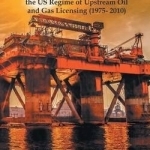
Security of Title and Government-Investor Relationship
Book
Dr Lionel Etan-Adollo has set the benchmark for evaluation, comparison and investigation for many...

World Prayer Time
Reference and Travel
App
600,000+ downloads !!!!!! App Features ------------ - Imsak, Fajr, Sunrise, Dhuhr, Asr, Maghrib...

